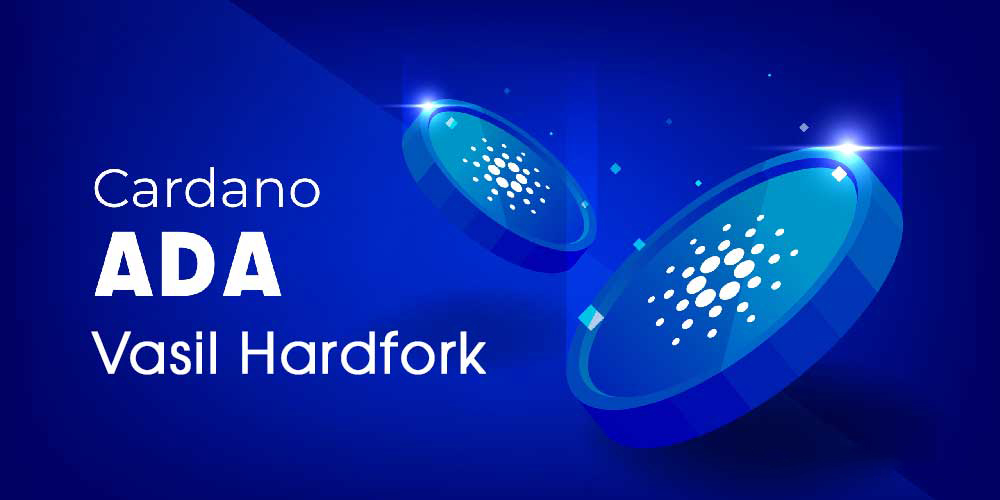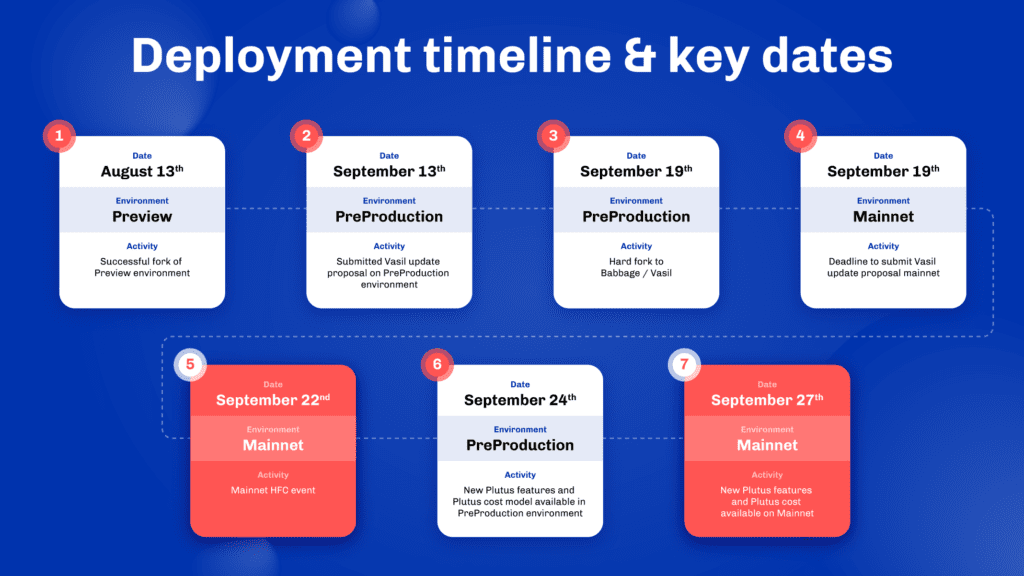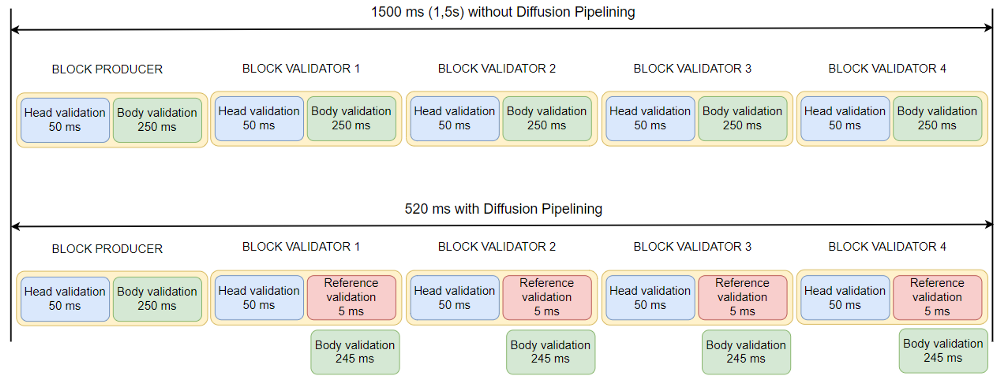Vasil hard fork is a major event in 2022 of Cardano Blockchain. Finally after many delays, the network has released the upgrade at the end of September 2022, so far the upgrade has been completed. So after upgrading, how will it improve the network, but the community is waiting for it and the project is so carefully prepared.

What Is a Hard Fork?
As it relates to blockchain technology, a hard fork is a radical change to a network’s protocol that makes previously invalid blocks and transactions valid, or vice-versa. A hard fork requires all nodes or users to upgrade to the latest version of the protocol software.
Forks may be initiated by developers or members of a crypto community who grow dissatisfied with functionalities offered by existing blockchain implementations. They may also be a way to crowdsource funding for new technology projects or cryptocurrency offerings.
A hard fork is when nodes of the newest version of a blockchain no longer accept the older version(s) of the blockchain, which creates a permanent divergence from the previous version of the blockchain.
Adding a new rule to the code essentially creates a fork in the blockchain: one path follows the new, upgraded blockchain, and the other continues along the old path. Generally, after a short time, those on the old chain will realize that their blockchain version is outdated or irrelevant and quickly upgrade to the latest version.
Cardano’s Vasil Hard fork aims to strengthen the network’s existing intelligent contracts and work towards network stability to deliver a better user and developer experience. Therefore, this is an essential revolution for Cardani in 2022 and the future development of the network.
What is Vasil Hard Fork?

To further improve the transaction speed and enhance the scalability of the blockchain, Cardano launched its Vasil hard fork, and after many delays, the update was released on the 22nd. September and successfully ended on September 27th.
Named after the Bulgarian mathematician Vasil Dabov, a famous Cardano ambassador who recently passed away, the Vasil hard fork will bring many upgrades to the network capacity and logical programming language. Cardano’s Plutus smart contract, enabling Cardano’s decentralized application (dApp) development.
Vasil aims to address all of these disparate areas with significant updates to network throughput, improvements to the Plutus intelligent contract language for dApp developers, reduced block transmission latency, and limited introduces the “diffusion pipeline” for the Cardano blockchain.
The Vasil hard fork focuses on improving the Cardano network for all users while upgrading the development experience for Cardano developers who use Plutus to create their decentralized applications.
Vasil was originally slated to launch earlier this year but encountered many obstacles. While the upgrade is live now, the ecosystem continues to reel from the impact of these delays.
Implementing Cardano Improvement Proposals (CIPs)
There are a number of Cardano Improvement Proposals (CIPs) that are ready to be implemented to the network.
In the Vasil hard fork, the CIPs implemented are geared around improving the usability, and increasing the capacity of the Plutus smart contract language. These are:
- CIP 31: Creating a new way for developers to reference an input allowing them to look at the result of an output without having to spend it. Datums in transaction outputs provide a way to store and access information on the blockchain. Prior to the Vasil hard fork, the output must be spent to know the information of the datum attached to that output. Vasil allows developers to reference this information without having to use the output. This optimizes transaction throughput and increases concurrency.
- CIP 32: The objective of this CIP is to allow datums to be attached to outputs instead of the datum hashes. Currently, since the datum’s hash is attached to the output, the full datum is required to finish the process. By implementing this update, developers can code scripts that point to the inputs directly.
- CIP 33: The proposal allows reference scripts to be attached to outputs. So, the reference scripts are used to satisfy the validation requirements. These Plutus reference scripts will, in turn, make transactions smaller, and make the validation process more efficient.
The implementation of these CIPs will improve network performance. At the same time, they’ll change many of the ways Plutus is used today. Many of the developers currently operating on Cardano will have to learn these new concepts.
Diffusion pipelining

Diffusion pipelining is an upgrade towards block propagation time. Important to improve network scalability, as the Cardano blockchain sees more dApp deployment. The core of the diffusion pipelining is to have blocks be transmitted without full validation while at the same time making changes to the consensus layer to improve block propagation across nodes.
The main information that must be preserved for propagation is the block’s header, basically all the metadata associated with the block and the hash referencing the previous block. The body of the block is preserved on the metadata contained in the next block, so that would make the network resistant to DDoS attacks even without full block confirmation.
The update will also lead to an increase in the size of the block. That would give much more space to data to be saved into each block added to the ledger. The final result is that these combinations of improvements and optimizations will lead to a much faster and scalable network.
Why is Vasil so important?

Named after a prominent member of the Cardano community who passed away in 2021, Vasil St. Dabov, the upgrade will enhance the ecosystem’s transaction throughput, efficiency, and block latency. Furthermore, the hard fork will see the implementation of a diffusion pipeline technique, which seeks to improve block propagation times while increasing the network’s transaction processing capacity.
The Vasil hard fork will introduce three major Cardano Improvement Proposals (CIPs), namely CIP-31, CIP-32, and CIP-33. In this regard, CIP-31 will introduce a new reference input mechanism that will allow DApps to access transaction output data without having to recreate it as before, making the whole process extraordinarily streamlined and saving time. At the same time, CIP-32 is designed to elevate Cardano’s level of decentralization by introducing on-chain data storage for network participants.
CIP-33 will make transactions lighter by changing the system’s native programming script, allowing faster processing and reduced fees. Finally, another innovation called CIP-40 will be introduced as part of Vasil, and it will introduce a new output transaction mechanism to help improve block transmission without full validation.
Other updates include enhancements to Cardano’s original, imaginative contract programming language, Plutus, which will now feature more advanced functionality than its previous iteration. Not only that, but Vasil will also improve the security of the platform by making it easier to interface with Cardano’s UTXO model (built to resemble Bitcoin’s) while keeping its transactions transparent off-chain load.
Conclusion
To date, the Vasil Hard Fork has been completed, the network crossed the 3000 smart contract mark in August and had 3,292 on September 22, when the Vasil hard fork occurred. As of time of publication, that number has grown to more than 3,400.
While ADA’s price action continues to be rather lackluster, the fact that the Cardano ecosystem has made such tremendous strides over the past year shows that the project seems prepared for big things in the coming years. near and medium term.
DISCLAIMER: The Information on this website is provided as general market commentary and does not constitute investment advice. We encourage you to do your own research before investing.
Join us to keep track of news: https://linktr.ee/coincu
Website: coincu.com
Foxy
Coincu News






















